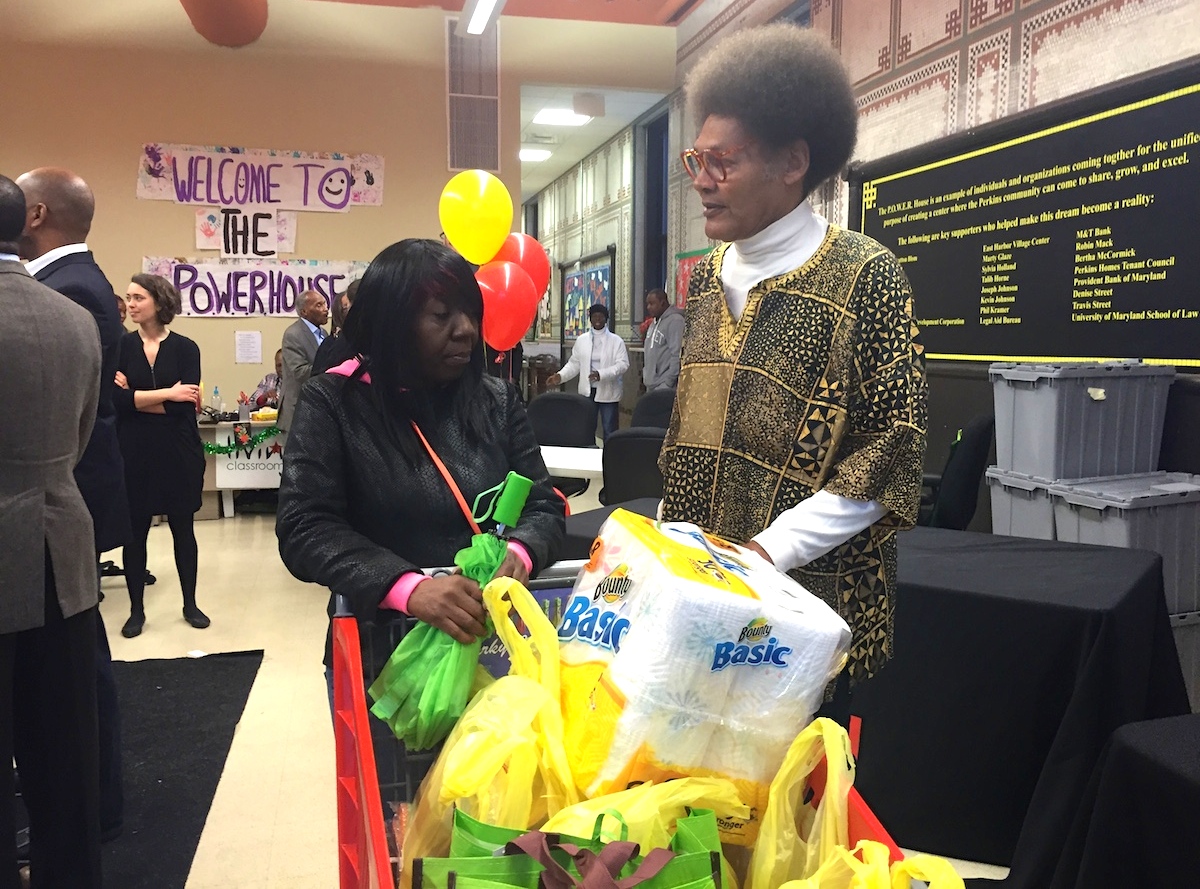Linda Jones walked out of the POWER House Community Center with a cart full of groceries. She didn’t have to travel to the store or pick the items off the shelves. That’s a good thing, since getting to the store takes a while for Jones. She lives in what experts classify as a food desert.
“I think it’s wonderful,” Jones said. “I just leave out of my house and come to the center, then I get my groceries.”
The ability to do online grocery shopping should not be restricted to the upper echelons of our society.
Jones, who lives in the Perkins Homes public housing development, wasn’t talking about a high-end service like Peapod or the local arrival of Instacart. Instead, she was referring to the city’s Virtual Supermarket, which brings online ordering and grocery delivery to food deserts.
This week, Baltimore city announced it was expanding the service to include the Perkins Homes — located between Little Italy and Fells Point — and the Wayland Village Senior Apartments in Northwest Baltimore.
The grant-funded program, which is part of the city’s Baltimarket food access initiative, uses online shopping as a way for residents in food deserts to get access to healthy food. Earlier this year, the grocery chain ShopRite signed on as a partner for the program, allowing residents like Jones to place their order through the grocer’s online platform.
Once a week, ShopRite delivers groceries to the POWER House in the Perkins Homes, as well as the senior apartments in Wayland Village. There’s no additional delivery charge. Residents pay when the groceries are delivered, making Baltimore’s program the only one in the country where residents can use EBT/SNAP, (also known as food stamps), according to city officials.
“Everybody is dealing with the same issues: time constraints, trying to find convenience, but also trying to find quality,” said Mayor Stephanie Rawlings-Blake. “The ability to do online grocery shopping should not be restricted to the upper echelons of our society. Everybody in every neighborhood should have that access, and it only happens when we have this type of a partnership.”
Our goal is to make this a program that you see not only across Baltimore but also across the United States.
The city launched the Virtual Supermarket in 2010, but it sat dormant after the original grocery store partner, Santoni’s Supermarket of Highlandtown, closed its doors after 83 years in 2013. The city brought back the program this summer when ShopRite signed on at two sites in South Baltimore’s Cherry Hill neighborhood. The city is currently looking to expand the program further.
“Our goal is to make this not a unique program,” said Laura Flamm, Baltimarket and Food Access Coordinator at the Baltimore City Health Department. “Our goal is to make this a program that you see not only across Baltimore but also across the United States.”
With grocery stores like Santoni’s closing, the need for programs that use existing resources to expand access are needed. About 1 in 5 Baltimore residents — including 30,000 children — live in areas that lack access to fresh food. Directly linked to high obesity rates, diabetes and other nutrition-related health issues, food deserts are officially defined as high-poverty areas where the distance to the closest supermarket is more than a quarter-mile, and at least 40 percent of households lack access to a vehicle.
“When we started talking to [the Baltimore Development Corporation] and the mayor’s office about what they were going to get when a family business came into the city, this is what we meant, because, we want to be in the community,” said Marshall Klein of Klein’s Family Markets, which operates nine Maryland ShopRite locations.

Along with access to healthy food, many high-poverty areas also lack internet access. The program also helps to provide the digital variety of sustenance in a city where between 20 and 40 percent of residents lack a home broadband connection.
In the Perkins Homes, residents can use internet at the POWER House computer lab. Grant funding from the United Way of Central Maryland and the Kaiser Family Foundation also provides money to purchase laptops if a central location with internet access isn’t available. To help connect on a personal level, the city has also identified neighborhood food advocates, who are available to help residents enter their grocery orders.
It’s a position that comes easy to Robert Singletary.
“I just contribute as much as I can throughout the whole community,” said the Perkins Homes resident, who will serve as one of two advocates in the area.
Belying Singletary’s humble approach, the position is important to help residents, some of whom have never used that kind of online ordering platform.
“It’s a way to help build comfort and familiarity with the platform, as well as helping to bridge the digital divide,” the Health Department’s Flamm said.







